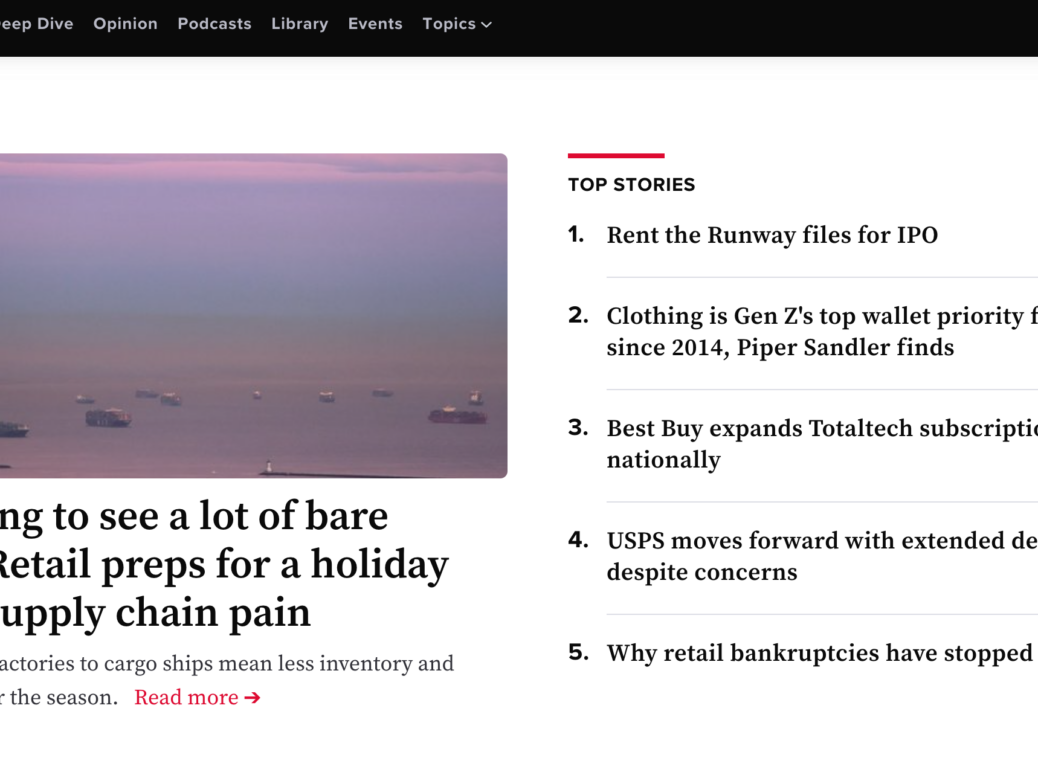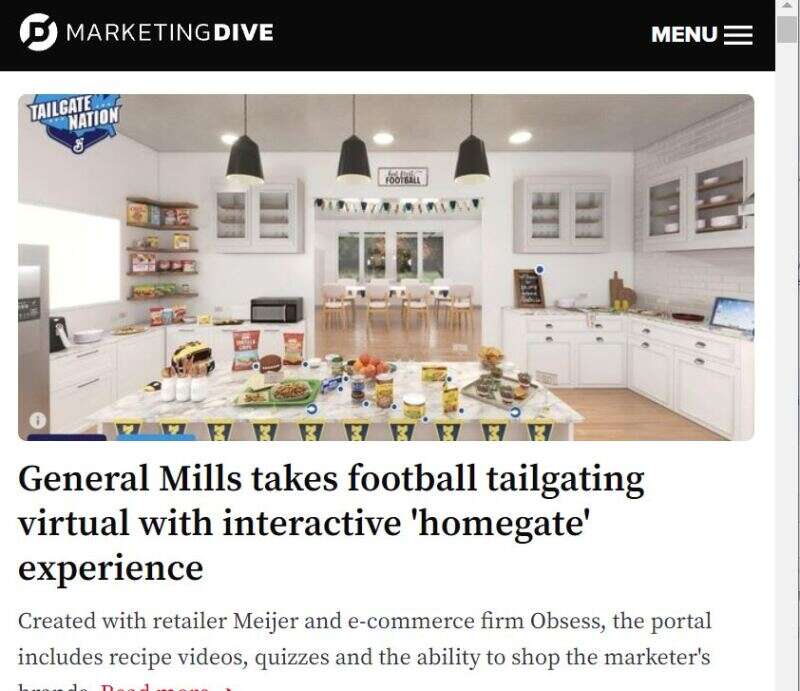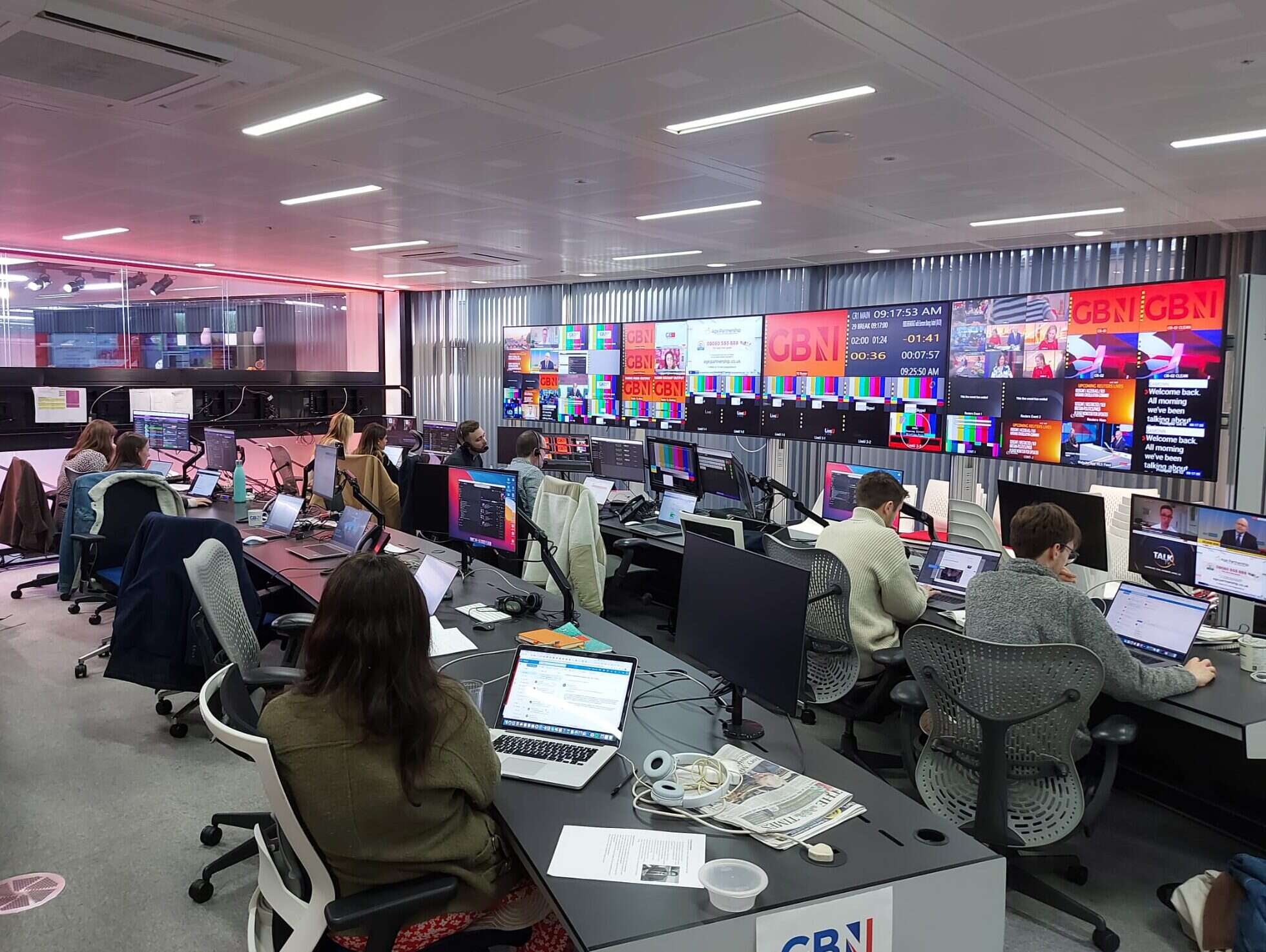
Update 19 July 2022: Informa buys US B2B publisher Industry Dive for £323m
When Sean Griffey launched B2B publisher Industry Dive in 2012, he and his co-founders would be happy if they had just a couple of users active on their specialist sites.
Nearly a decade on, and Industry Dive’s 100 or so journalists claim a total audience of more than 11m executives across different sectors. Griffey expects the business to generate revenues of around $80m this year – well over double its 2019 figure – with a profit margin of roughly 30%.
And, unlike many of its B2B industry peers, Industry Dive has so far succeeded without putting its specialist websites behind paywalls.
“It became very popular to say that ad models wouldn’t work and that everything has to be subscription,” Griffey tells Press Gazette via a video call. “But what we said was that ad models and marketing models still really work if the audience is incredibly valuable. And where the audiences are very valuable are in niches.”
Chief executive Griffey co-founded Industry Dive with Ryan Willumson (chief revenue officer) and Eli Dickinson (chief technology officer) in January 2012 in Washington, DC. All three previously worked for another B2B publisher, FierceMarkets.
Click here to subscribe to Press Gazette’s must-read newsletters, Future of Media and Future of Media US |
Starting out with “a couple of hundred thousand dollars” of angel investment, they launched their business with five B2B websites, covering construction, education, marketing, utility and waste.
“And there were three of us,” Griffey says. “So that was really ambitious, and kind of stupid.
“But there are a lot of people that launch media companies with the ambition of being in multiple markets. They say they’re going to perfect the first one before they [expand]. And then they fall into a trap where they never perfect the first one.
“So we wanted to do multiple ones right away, even if it meant that none of them were going to be perfect from the start.”
Following some private equity-funded recent investments, Industry Dive today has 25 specialist titles covering 22 sectors. And it is growing fast.
‘You treat every single reader as incredibly important’
Industry Dive’s founders worked with some freelance writers in their early months but, in the main, “we were doing it all,” says Griffey. “From audience development to the business to the development to writing content to building chairs. You name it.”
None of Industry Dive’s founders were journalists, and so its five publications had no existing audience to build from at launch.
How did they grow?
“Hand-to-hand combat,” says Griffey. “We were a bootstrap media company. We were not one that had a lot of venture dollars and the rest. We raised a little bit of angel money, but it was never this big war chest.
“The number one thing that you do is produce something that’s interesting and valuable and insightful to someone and hope that they share it. That is the main thing we did.”
He adds that Industry Dive had a small budget for paid marketing and worked hard to perfect audience-building techniques like search engine optimisation (SEO).
“In the very beginning I would email people,” says Griffey. “And if someone responded to the newsletter, I would respond to every single one of them. You treat every single reader as incredibly important.
“This was back in the day when we’d look at the website and say, ‘There’s five people on right now!’ And you look over and the two other guys are on the site. And so we’re like, ‘Well, we’re three of them, so there are two other people in the world!’”
Griffey says it took Industry Dive more than a year to reach profitability.
“One of the reasons venture dollars are tough in media is because venture has expectations of growth and audience. But a brand takes time to grow. You can’t speed much of that up, as much as you want. Time is what’s going to do that.
“Even today, with a huge audience to build off of and with a machine and experience and technology platforms to build off of, when we launch a new publication you’re still looking at a year-plus for it to really gain traction.”
Covering ‘the heck out of’ industry trends
Of course, time and patience weren’t all that was required to establish Industry Dive’s titles across numerous sectors.
When the company started out, Griffey says he and his team focused on creating websites that would work well on mobile (a relatively new issue at the time) and have strong newsletters attached. Industry Dive also attempted to differentiate itself with content and website design.
“If we do something different, we’ll stand out,” Griffey says, explaining how Industry Dive attempted to create “our wedge as new entrants”.
“If we have great design in business markets, we can stand out. If we’re mobile-friendly, we’ll stand out. And we always believed in email – that was a big part of our backgrounds and the rest.”
Industry Dive’s initial content mantra was to create “concise pieces that told stories quickly”. But this approach changed over time, says Griffey.
“When we really started to explode was when we said it’s not just about saving people time, it’s about real insight about what’s happened, what this means to their industry.
“So the mainstream news can do a great job of saying what happened with a deal, or announcing a deal and getting the terms.
“But for niche publishers and business publishers, what you really need to do is talk about: What does this mean for your company? For your job? For the future?”
Above all else, Griffey says he wants his websites to be “insightful” to their executive audiences.
“Trends, in particular, are important for us,” he adds. “What we want to do is say, ‘Here are the five, six trends that are really shaping the industry, that matter’ – and cover the heck out of those.
“So how does a story inform what’s happening in that trend? What does it mean going forward? Our publications really sing when it’s not just saying: Here’s what happened. But it’s saying: Here’s what it means. That’s really challenging.
“We don’t do an amazing job of that on every single story, but that’s what we aspire to do.”

Other B2B media ‘devalued’ journalism
In September 2019, Industry Dive accepted its first major external investment when private equity firm Falfurrias Capital Partners bought a majority stake in the business.
“Quite honestly, we were at a point where the company felt like it deserved investment – that our not having money at that point was holding us back,” says Griffey.
The investment of Falfurrias has led to a period of M&A-fuelled expansion for Industry Dive. The company has acquired five media firms since July 2020, including PharmaVOICE and Ladders News, a jobseekers publication, last month. Griffey says Industry Dive has no more immediate acquisition plans, and adds that “our organic growth outpaces our acquisitions”.
Thanks to both organic expansion and M&A, Griffey says Industry Dive is on course to complete its tenth year (2021) with revenues of $80m, up from $29m in 2019.
Griffey says that around 50% of the company’s revenues come from “digital marketing campaigns,” including newsletter sponsorships.
He describes his company as “marketing-supported” rather than ad-supported, because “when you say ‘advertising’, people think banner ads and clicks and programmatic – we run zero programmatic ads on our site.”
He says 31% of Industry Dive revenue now comes from its content studio, which creates marketing campaigns for clients. Another 10% comes from its software and content licensing business. And 9% of revenue comes from “digital events, webinars, and other community-based products”.
Because of its non-paywall approach, Industry Dive currently has no paid subscriber revenues. Griffey suggests that this could be a growth area for the business in the future.
“I think all the models can succeed,” he says. “I’m not anti-subscriptions. I’m not saying it’s bad. I think it’s really healthy for a lot of the industry. I think it would probably be good for some of our markets. I think some day you’ll see us go into them. I just don’t know when.”
It is notable that events and webinars currently make up Industry Dive’s smallest revenue category. Over the past 10 years, many established B2B publishers have sought to establish themselves as events-focused businesses.
Griffey is a sceptic of this approach. Instead, he advocates a journalism-first approach to the B2B publishing industry.
“I think there was a time where the business media world devalued the content and the journalism, and said what we need to do is have large events. ‘And so we’ll create events and we don’t need publications or year-round touchpoints, we don’t need ongoing relationships.’
“I thought that was a mistake. And so we’ve been talking about the journalism for a long time. It’s come back into fashion, but it’s only come back into fashion because people now charge for subscriptions. Now people say, well, journalism’s good, but it’s the subscriptions.
“But the journalism’s always been the foundation of what we can do. There weren’t many people in 2015, 2016, 2017 who believed that.
“I think a lot more people believe it now, and that’s really helpful.”
Email pged@pressgazette.co.uk to point out mistakes, provide story tips or send in a letter for publication on our "Letters Page" blog






